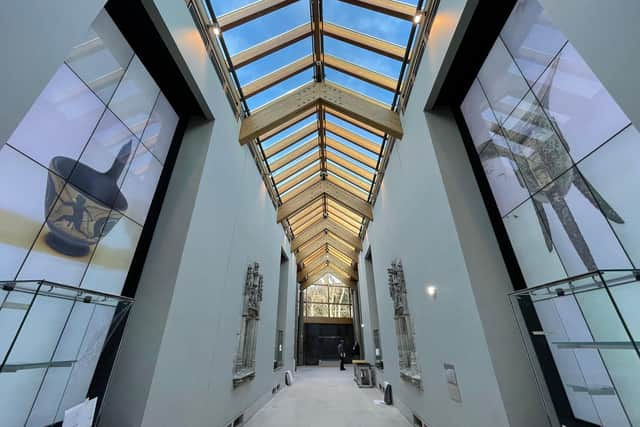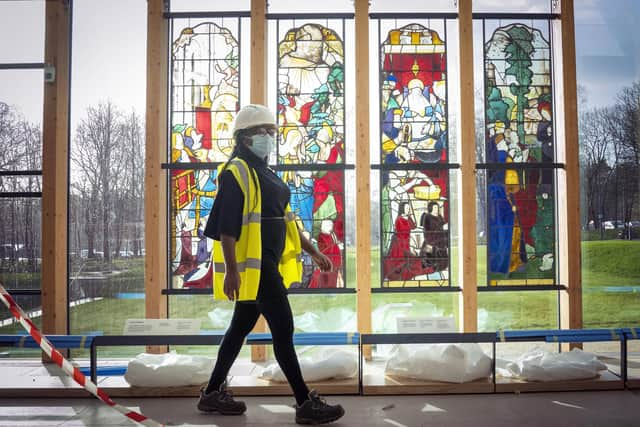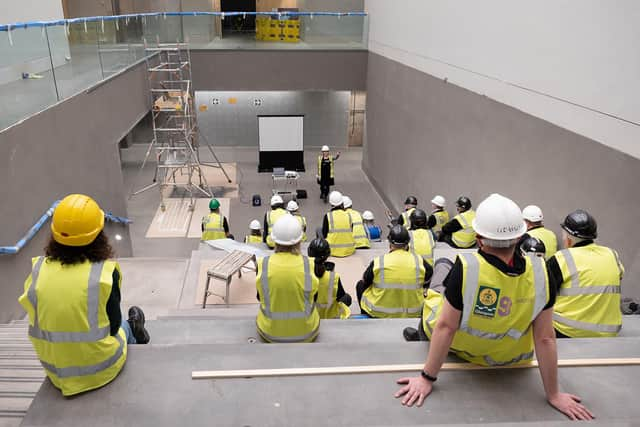Burrell Collection: Glasgow reveals £68m new look for home of 9000 art treasures gifted by shipping magnate
Now the vast legacy of the shipping magnate and philanthropist Sir William Burrell, who collected works of art from all over the world, is set for a new lease of life after one of the biggest cultural projects in modern times in Scotland.
Glasgow City Council, which describes The Burrell Collection museum as “one of Scotland’s finest examples of post-war architecture,” revealed its new look as it announced a public reopening on 29 March.
Advertisement
Hide AdAdvertisement
Hide AdThe £68.25 million transformation of the A-listed attraction in Pollok Country Park, in the city’s south side has safeguarded the future of the art treasures Sir William collected across more than 75 years and ensured more of the work can be seen than ever before.
Gallery space has been increased by more than a third under a six-year project, which will allow some of the 9000 works to be displayed for the first time in decades or, in some cases, ever.`
The centrepiece of the project – the biggest museum refurbishment in Britain in recent years - is a new staircase which will allow visitors to explore all three floors of the building for the first time.
The building will have a new main entrance and cafe, while store rooms will also be opened up to the public for the first time to widen access to the collection, donated by Sir William in 1944 and added to until his death in 1958.
Sir William, who insisted the collection be displayed in a rural setting, had eclectic tastes, acquiring paintings drawn from five centuries and other works of art spanning five millennia.
Highlights include one of the most significant collections of Chinese pottery and porcelain in Europe, one of the most important collections of tapestries and stained glass in the world, one of the three earliest surviving Persian garden carpets in the world.
The collection, which also features, Islamic art treasures, European arms and armour dating from the 13th to the 17th centuries, including weapons carried by the personal guards of princes and monarchs, and work by the French artists Manet, Cézanne and Degas.
Advertisement
Hide AdAdvertisement
Hide AdThe transformation of the museum, which opened in 1983, is said to have turned it into “an exemplar of sustainable low carbon design,” thanks to improved power, heating and lighting systems, and a new roof and glazing.
Bridget McConnell, chief executive of Glasgow Life, which runs the museum, said: “When the Burrell first opened it was the first real self-conscious statement from Glasgow that it was a world city of cullture.


"A lot of people scoffed at that point, but it was a landmark moment for this city and we all know what happened after that – the Glasgow Garden Festival, the city becoming a European City of Culture and a UK City of Architecture of Design – the list goes on.
"But during that period we discovered that there were fundamental issues with the roof which, in a very wet Glasgow, just could not be resolved. The environmental controls and technology we have now just weren’t available when it was built.
"The physical fabric of the building became an increasingly problem, which resulted in visitor numbers declining. There was a real sense from very early on in my time, which was from 1998, that it really needed attention.
"I think that we’ve ended up with an even more magnificent building than it was before.


"The architects have stayed true to the original aesthetic and, within the building envelope, increased the amount of gallery space by 35 per cent, which is incredible. The new central hall will become a real focus for people, not just for orientating themselves, but also just to sit down, reflect and enjoy being in such an amazing space.”
Advertisement
Hide AdAdvertisement
Hide AdJohn McAslan, the Glasgow architect whose practice has masterminded the revamp, said: “The idea was obviously to repair the building, which had been significantly damaged because its roof and facade leaked. A big part of the budget went on roof repairs and new energy systems.
“But previously there was no real rotation of the collection and only around 20 per cent of it was ever on display. Now half is on display, the other half is in the building for rotation and there is a proper temporary gallery. People will be able to constantly see new things when they visit.”
Deputy council leader David McDonald said: “The most important people for us to get through the doors first are locals and Glaswegians. We’re looking forward to welcoming them back really soon.
“However this is a world-class collection, which needs that international level of visitors and recognition. It actually started to gain that during the closure period when some of the collection toward around the world to rave reviews.
"We know that international audience is there. Hopefully now, as we move forward into a period of more stability for international travel, the Burrell will be on people’s list of must-visit places in Glasgow and it will draw people back to the city in the same way it did in the 1980s.”


Half the funding for the revamp was pledged by Glasgow City Council, with the project also backed by the UK and Scottish governments, the National Heritage Lottery Fund and a fundraising campaign.
Sir Angus Grossart, who led the fundraising drive, said: “The Burrell Collection is one of the finest in the world.
Advertisement
Hide AdAdvertisement
Hide Ad"Visitors will soon be able to enjoy its enormous cultural diversity, great beauty and appreciate the scale of Sir William Burrell’s achievement.
"As a result, its global reputation and international reciprocal engagement will grow further, attracting new audiences to Glasgow to see it for themselves and to gain from the strong programme of international temporary exhibitions we’re planning.”
Comments
Want to join the conversation? Please or to comment on this article.
